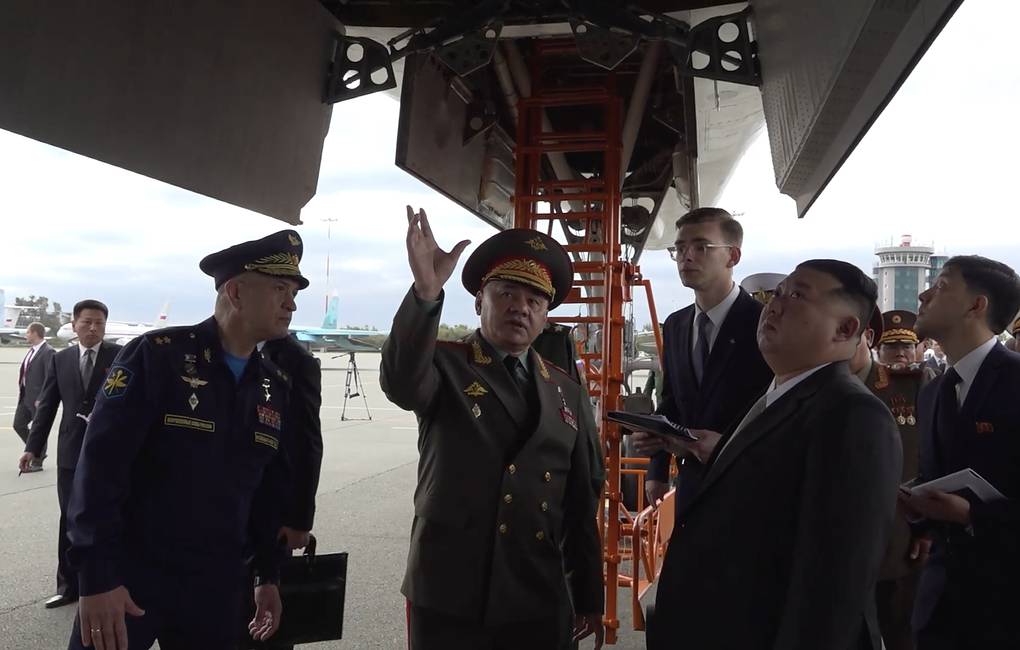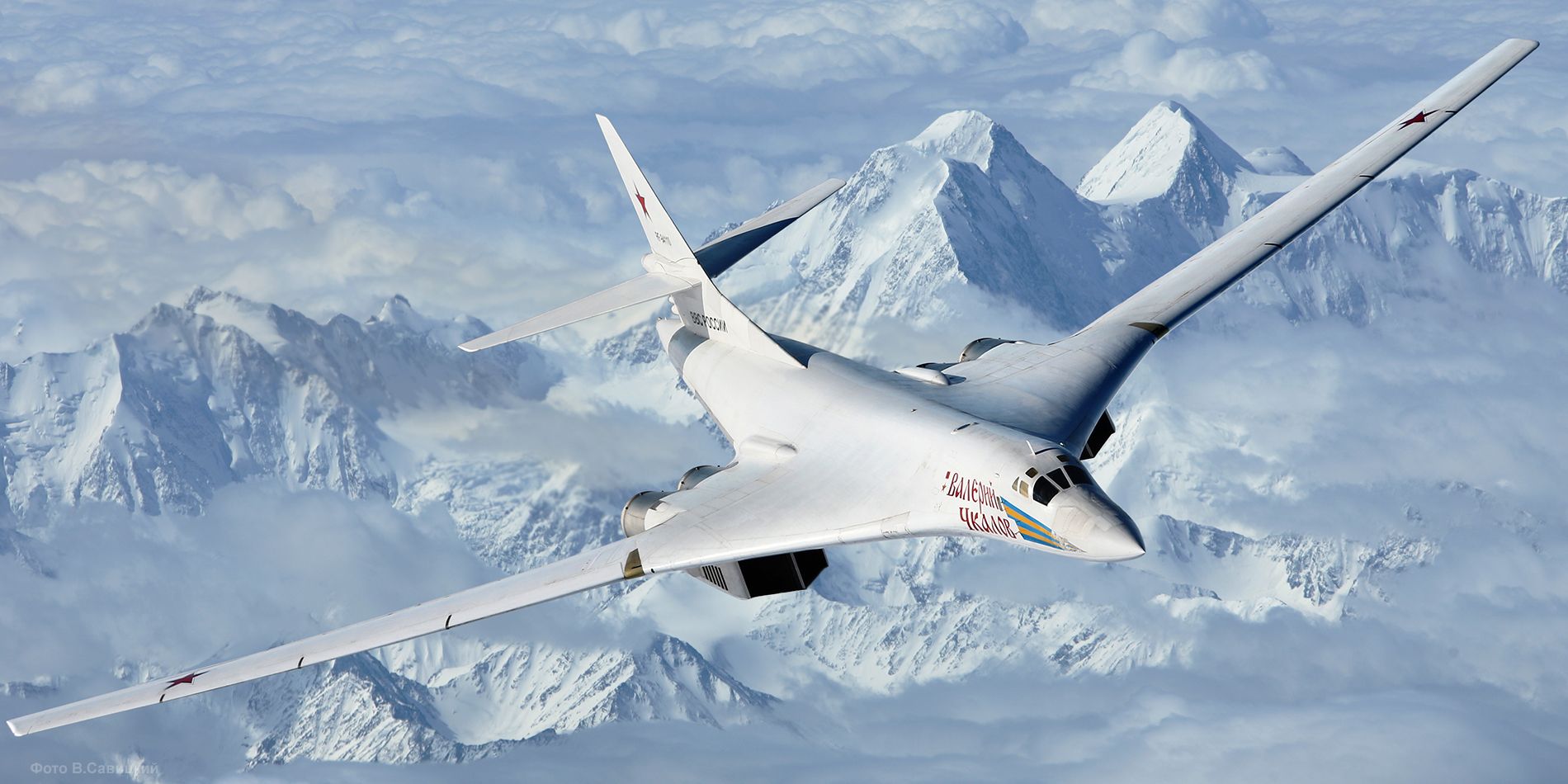Russia’s most advanced strategic bomber, the Tupolev Tu-160 White Swan, has received the new 6,500-km range Kh-BD cruise missile that would significantly enhance the Air Force’s offensive strike capability. It also adds to the diversity of options and weapons before its commanders.
India’s Quest To Export LCA TEJAS Hits ‘Roadblock’; HAL Must First Meet Indian Air Force’s Needs
The development was announced when North Korean leader Kim Jong-un was granted rare and unprecedented access to Russian bases in the far-east, where he was shown leading aircraft, naval, and missile platforms, one of which was the Tu-160.
This was preceded by a EurAsian Times analysis about Russian Ministry of Defense (RuMoD) officials considering the deployment of Tu-160Ms in the Amur region in the far-east. Izvestia had quoted military expert Yuri Lyamin, who said, “The deployment of strategic missile carriers in the Far East should neutralize the threats posed by the United States and its closest allies in the region.”
He went on to specify Japan as the potential target, with whom Russia contests the Kuril islands in a long-running territorial dispute.
Russian Air Force General Reveals Missile To Kim
According to a report in TASS, Russia’s “Long-Range Aviation Commander Lieutenant General Sergey Kobylash” made the statement when Defense Minister Sergei Shoigu and Kim visited the Knevichi airfield. “(A bomber) carries a Kh-BD missile with a range of over 6,500 kilometers,” Koblyash said.

The new cruise missile for the Tu-160, designated X-BD, has a range of up to 6,500 kilometers (4038 miles), and various posts on many Russian media and leading Telegram groups have also been made regarding this range claim.
The secretive missile has been assessed to have low-observable shaping and can clock between just short of supersonic to supersonic speeds. Like the Kh-101, it will certainly have the ability to change directions mid-flight to confuse enemy air defenses. However, it is unclear if it can also carry nuclear warheads.
How Will It Be Used?
During Kim’s visit, Koblyash, while showing him around the Tu-160 in the video released by the RuMoD, said: “The Kh-BD missile is housed in two cartridges carrying six missiles each.” This translates to a single Tu-160 carrying a payload of 12 Kh-BDs.
Its induction is consistent with the prevalent techno-military doctrine of fielding long-range missiles and aviation platforms that allow Moscow to fight off an adversary from a distance without getting close.
The thinking goes: long-range missiles, especially if fired by fast-flying long-range aircraft, make it possible to hit targets in the most remote areas where a strike has at least a semi-strategic impact. This seriously upsets an adversary’s war planning calculus, injecting a sense of vulnerability and forcing complicated workarounds.

Long-range missiles and aircraft afford the fundamental tactical advantage of keeping the firing aircraft within its borders. Flying close to enemy airspace or inside it makes it big and an easy target.
Going by the standard military practice, the Tu-160 will fire a salvo of missiles and not a single shot. Even six missiles heading towards a target and periodically changing directions is enough to overwhelm enemy air defenses and exponentially increase the chances of a hit.
Russian Military Thinking
In theory, for Russia (or even to a certain extent China, since they share essentially the same politico-military doctrine), the ad-hoc adjustments by an enemy to shield themselves from such strikes are expected to drain the resources and decision-making process significantly. Such a non-direct combat drain on the enemy limits his options, ensuring his offensive actions are not ambitious.
Assume the US or Japan execute bold plans to convey their warfighting intent and are willing to sustain a painful strike. Russia would go ahead with implementing the Tu-160-Kh BD attack.
This demonstrates both political and strategic capability. Russian leadership exhibits its will to carry out the attack. And if the strike is successful, it would devastate a US aircraft carrier, a land base in far east Asia, or even a base in Alaska.
The resultant political impact on the divided US political leadership and the war-averse public would be immense, seeing the loss of hundreds of American servicemen in a single blow.
Deadly Combination
From a purely military perspective, the missile’s effective range comes to around 14,000 km when combined with the range of the Tu-160.
Russia has long claimed the Tu-160 to be the world’s largest supersonic aircraft and the heaviest payload-carrying bomber.
The Tu-160M and M2 upgrade also brings the bomber being implemented in two stages, the new K-042K-1 navigation system and ABSU-200-1 autopilot. Lastly, the NK-32-02 turbofan engine — touted as the world’s most powerful combat engine, developed over 55,000 pounds (24,947 kg) of thrust, according to leading US defense affairs publication The Warzone.
It also receives the new Novella NV1.70 radar, a computerized “glass” cockpit, the latest communications, and anti-jamming Electronic Support Measures (ESM).
With these upgrades, pre-existing one-of-their-kind capabilities, and an ongoing war that allows Russia’s defense industry and military planners to perfect the technology and refine their tactics, training, and procedures (TTP), a radical new missile lends a terrifying airborne strategic strike capability.
The Tu-160 upgrade program and the Tu-22M2 bomber fleet are meant to be in service at least until the late 2030s when the under-development PAK-DA stealth bomber should appear.
‘Western Defenses Cannot Intercept The Kh-BD’
According to Ilya Kramnik, a researcher at the Center for the Study of Strategic Planning (CSP), the Kh-BD and Tu-160 combination would also serve the option of hitting targets on Russia’s west in the event of a war with the US and European NATO countries.
A post attributed to him that went around on many Russian Telegram groups said Russia might use the platforms to hit a target for which the missile would need to bypass enemy air defense lines and come in from unexpected directions.
“Say, from the southwest (in the case of Great Britain) or from the southeast (in case of hitting targets on the East Coast of the USA). Moreover, due to its range, the missile can be launched from relatively safe areas over the Arctic, and it will bypass the main air defense lines in flight over the ocean.”
“To protect against such a scenario, a potential adversary will have to spend tens of billions of dollars to create a national air defense system that it previously lacked, designed for the all-round defense of key areas of the country, and move its forward lines into the ocean to try to catch cruise missiles over the expanses of the North Atlantic. Neither NORAD nor the air defense systems of European NATO countries have ever been designed for such tasks.”
European leaders promoting different missile defense systems in June this year, with Germany and France clashing with their respective proposals, imply that Europe does not possess the capability to defend itself from sophisticated Russian missilery.
- The author can be reached at satamp@gmail.com
- Follow EurAsian Times on Google News




